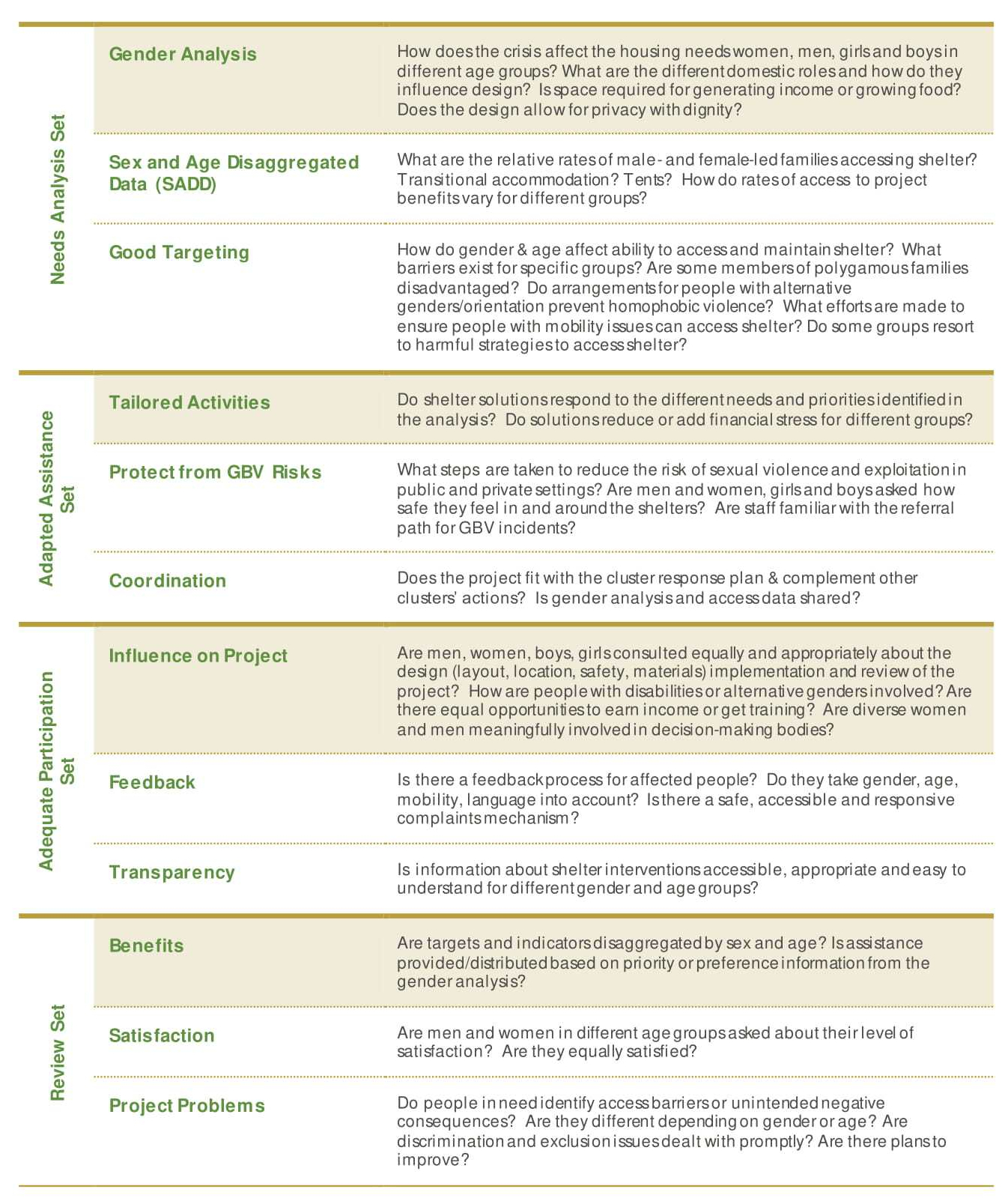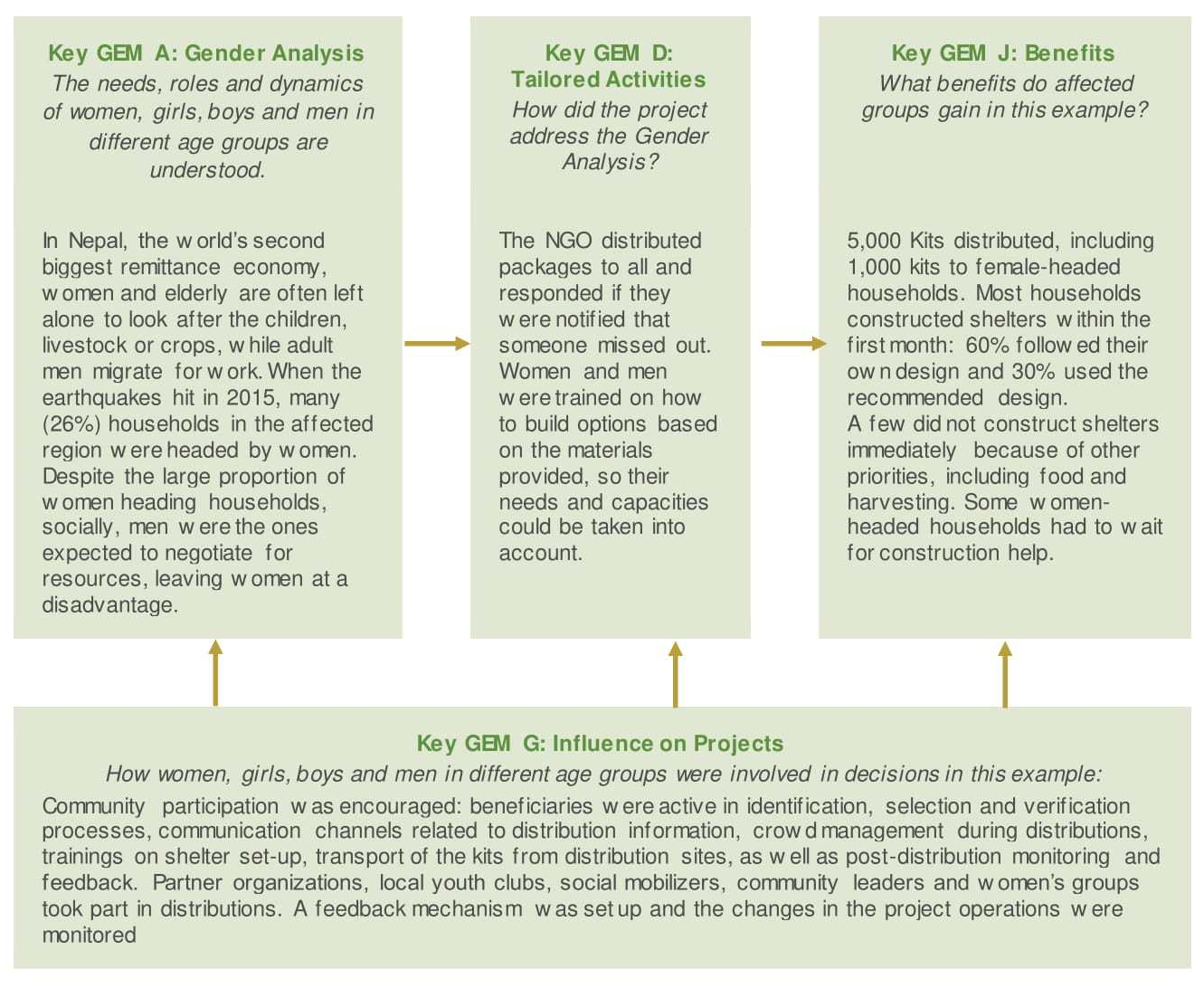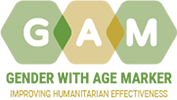Download the Shelter Tip Sheet
This Tip Sheet offers interventions, guiding questions and an example of how 4 Key Gender Equality Measures (GEMs) support gender equality in Shelter projects and programs. It should be read together with the GAM Overview. The IASC GAM identifies and codes projects based on the extent to which key programming elements are consistently present in proposals and implemented projects. Four steps (GEMs) are assessed in the design phase, and twelve GEMs are reviewed in monitoring.
Access to, expectations and needs with respect to shelter often vary according to gender and age. Different opinions and priorities for privacy, socialization, or cooking space make it worthwhile to consult with different family members. Understanding distinct needs requires assessment within the household and tailoring the response to this information.
Shelter projects and managers can make assistance responsive and fair by:
- Accounting for differences: describe and count distinct needs, capacities, preferences and satisfaction rates by sex and age;
- Providing shelter solutions, construction materials, cash, technical assistance, information or a combination of these to meet the distinct needs of the affected groups;
- Involving groups in identifying shelter and settlement solutions that meet their basic needs, along with the relevant authorities and all responding agencies;
- Measuring whether women and men benefited equally from temporary shelter and settlement solutions, and that they are safe and adequate for all.
Questions to inspire action:

Gender mainstreaming, or a targeted action?
Some shelter interventions may target actions to address specific discriminations or gaps resulting from gender norms or expectations (Targeted Actions/T). For example, a project may focus solely on supporting single women with family responsibilities (“female-headed households”) by providing rental assistance and advocating to stop discrimination against female lease-holders.
However the majority of humanitarian interventions will aim to assist everyone in need while considering and adapting activities to meet the different priorities and dynamics among women and men (girls and boys) in different age groups (Gender Mainstreaming/M). An example would be a project providing shelter to an entire affected population, offering different options depending on family configurations and reflecting preferences of women and men.
The GAM Overview explains coding in more detail.
Example of Good Gender Equality Programming in shelter
(GAM Code 3(M) – can you work out why? See the GAM Overview)

Using Gender Equality Measures in projects or cluster programs leads to better quality programming, responsive to gender and age issues.

